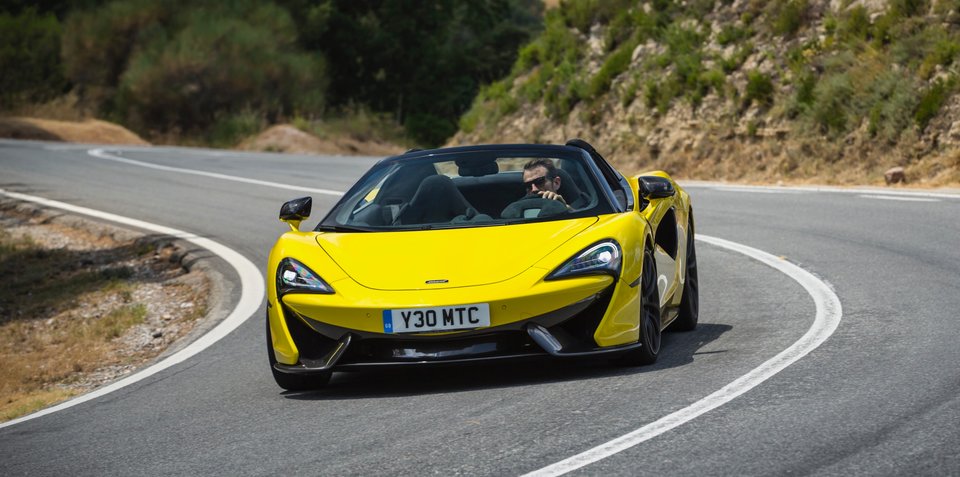
That’s the message conveyed to the motoring press at the recent launch of the 570S Spider by Paul Burnham, Chief Engineer for the brand’s Sports Series line.
“Make no mistake, the 570S Spider is a very, very capable supercar, despite its positioning within the McLaren fold as a more versatile model more focused on everyday useability and versatility, and less on ultimate downforce and track performance,” Burnham told CarAdvice.
“At McLaren, we like to think we’ve got the only authentic sports car setup in the market. It’s no coincidence that not a lot separates McLaren’s various models, given they feature all a carbon-fibre tub, hydraulic steering and the same 3.8-litre twin-turbo V8 sitting amidships.”
In that respect, there isn’t a lot that separates the Sport and Super Series from each other. In fact, with the 570S range, things like tyres have been specifically down-rated, compared with the Super Series cars.
“It’s one of the reasons why the 570S gets slimmer tyres than the new 720S Super Series car, otherwise there isn’t a lot that separates these two cars, as far as grip levels go. It means you can reach the limit earlier – and theoretically, have more fun.
“Our aim was to make the Sports Series more exploitable at road speeds, whereas, with the Super Series it’s about pure performance”, he added.

Above: the new McLaren 720S, top of page: the 570S Spider
We asked Burnham about the importance of reducing lag on the twin-turbo McLaren road cars. Mind, there isn’t much, but down low enough, you can still find a dead spot in certain situations when you really need to jump on it.
“We’re constantly looking at ways to improve throttle response by further reducing turbo lag, but much of that has to do with software than anything else.
“In between the launch of the 650S range and release of cars like the 570S Spider, we’ve continuously improved what the engine software is doing in response to throttle input.
“It’s still a turbo car and there is a limit to how far you can go, but there are things you can do to improve either the reality or the perception of lag,” he said.
Thankfully, McLaren has also made the decision to stick with hydraulic steering, due to the more natural feedback it provides from the road for what is a very satisfied feeling.
MORE: McLaren 570S Spider REVIEW

And, even though it’s a Spider, the electrically operated roof system is something of a masterpiece in design, useability and functionality.
“Some of our Sports Series owners use their cars as daily drivers, so it’s critical the roof mechanism be non-fiddly and easily deployed – as this one is. Simply hold the button and in less than 15 seconds the roof can be opened or closed – at speeds up to 40km/h.”
And it works brilliantly, as tested on the launch program. Better again, when you consider the fact the Spider is no slower than the coupe, with the roof up (top speed is 328km/h) and slightly less with the roof down (315km/h).
Mind, on test, we did find there was a fair amount of buffeting in the cabin at around 130km/h, but oddly enough, we could still quite easily hold a conversation at normal volumes.
“For the Spider, we developed a glazed wind deflector, to reduce turbulence inside the cabin, and we’re still working on that, in terms of airflow around the rear buttresses”, outlined Burnham.
Source:-.caradvice